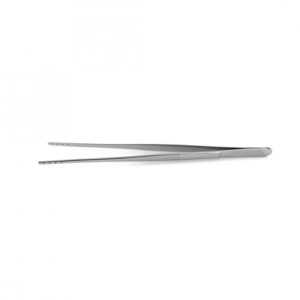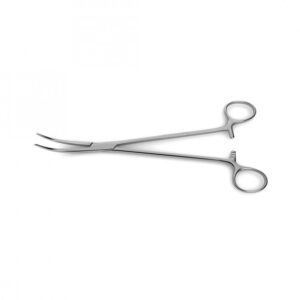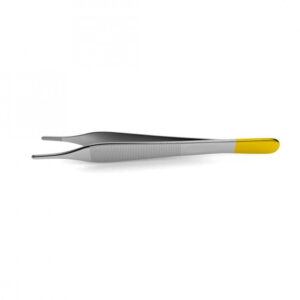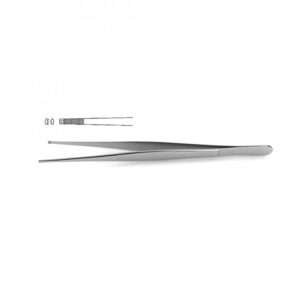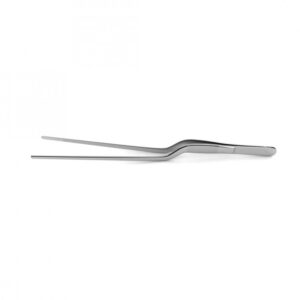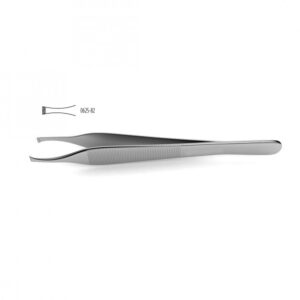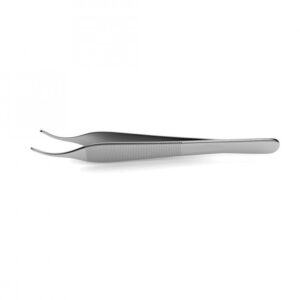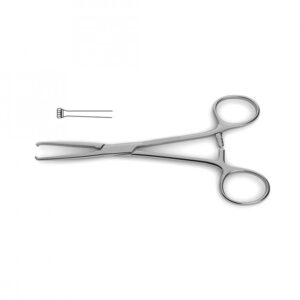| Name | Swiss Jeweler Style Forceps – Style 7 |
| Lead Time | Lead time advised within 48 hours of order placement. |
| Competitor | ;BD333R;355175;355-175;PM4715;PM-4715;306717;30-6717;601694;60-1694;NL1422;RS-4907;RS4907;0760-07;OP0913201;OP0913-201;0761-07;0760-07_0761-07; |
| Specialty | General Instruments-Thumb Forceps – Microsurgical |
| Material Finish | Stainless Steel |
| Grade | Premium Operating Room |
| Units of Measurement | Each |
| Manufacturer | seemab surgical |
| Sterility | Non-Sterile |
| Usage | Reusable |
Swiss Jeweler Style Forceps – Style 7
Style 7, curved, 4-1/2″ (11.4 cm)
Swiss Jeweler Style Forceps are handcrafted from surgical grade German stainless steel. Designed with curved, fine or micro-fine, style 7 points for control; this instrument is ideal for graft placement and other precision work. The flat handles allow for a comfortable grip for the surgeon.
SKU:
VI-01-340
Category: Forceps & Clamps
Description
Shipping & Delivery
Related products
Adson Thumb Forceps – Tungsten Carbide
Tungsten Carbide
Adson Thumb Forceps are handcrafted from tungsten carbide for a durable and strong instrument. Available in a variety of forms: for dressings with a serrated platform or for tissue with a serrated platform and 1x2 teeth. Each style is also available in a delicate pattern and at several different lengths for a comfortable grip. Tungsten carbide forceps feature tips made from tungsten carbide, the hardest metal made for surgical instruments. Precision-milled serrations are formed onto the tungsten carbide inserts, resulting in pyramid-shaped teeth that provide a non-slip grip. Pyramid-shaped teeth align perfectly with each other to provide a durable and reliable grasp of the most delicate or toughest tissues, as well as needles, sutures, dressing materials and delicate vessels. Smooth tungsten carbide inserts are also available for delicate procedures. Spring tension allows for surgeons to maintain proper and consistent position, ensuring optimal grip without having to apply excess force. These forceps feature gold-plated handles.
Adlerkreutz Tissue Forceps – Narrow Jaws
Narrow jaws, 2x3 teeth
Adlerkreutz Tissue Forceps are handcrafted from surgical grade German stainless steel. Designed with narrow jaws and 2x3 teeth for a secure grip on tissues. The slim design allows for delicate and precise dissection and tissue handling while the wider grip assures a comfortable grip for the surgeon.
Adson Suture Forceps
Adson Suture Forceps
w/ tying platform, 2.0 mm tips, 4-3/4" (12.1 cm), smooth platform
Adson Suture Forceps with Tying Platform are handcrafted from surgical grade German stainless steel. These forceps are designed with 2.0 mm tips and a tying platform. Available with a smooth platform to securely hold a suture or with 1x2 teeth and a smooth platform for extra grip. This instrument is protected by seemab surgical manufacturer warranty on defects in materials and workmanship.
Adson-Micro Thumb Forceps – Angled Tips
Adson-Micro Thumb Forceps - Angled Tips
angled tips, 4-3/4" (12.1 cm)
Adson-Micro Thumb Forceps are handcrafted from surgical grade German stainless steel with angled tips. Available in a variety of forms: for dressings with a serrated platform or for tissue with a serrated platform and 1x2 teeth. Each style is available with a serrated handle for a comfortable grip. This instrument is ideal for delicate tissues.
Adson Bayonet Dressing Forceps
7-1/2" (19.0 cm)
Adson Bayonet Dressing Forceps are handcrafted from surgical grade German stainless steel. Designed with its bayonet handle angled and 90 degrees from the grasping direction, these dressing forceps offer a leverage not seen with standard models. The serrated handle assures a firm grip on this instrument.
Adson-Graefe Tissue Forceps
Adson-Graefe Tissue Forceps
4-3/4" (12.0 cm)
Adson-Graefe Tissue Forceps are handcrafted from surgical grade German stainless steel. These forceps are designed with flat, delicate tips for precision tissue handling. This instrument is protected by seemab surgical manufacturer warranty on defects in materials and workmanship. Please note that website images are often representative of the product family and may not conform to the exact specifications or features of the item you select. The final specifications will match the description of the specific catalog item you select.
Adson Thumb Forceps – Angled Tips
Adson Thumb Forceps - Angled Tips
angled tips, 4-3/4" (12.1 cm)
Adson Thumb Forceps are handcrafted from surgical grade German stainless steel with angled tips. Available in a variety of forms: for dressings with a serrated platform or for tissue with a serrated platform and 1x2 teeth or 1x2 teeth with cross-serrated tips.
Allis Tissue Forcep
Allis Tissue Forceps
standard pattern
standard pattern of the Allis Tissue Forceps are intended for the use of firmly grabbing or holding body tissue during surgery. This pattern includes a ratchet ring-handle with a selection of different sizes and types of teeth to accommodate various medical procedures. These teeth curve to the inside and may cause less harm to the tissue because of decreased general pressure applied to the area.


